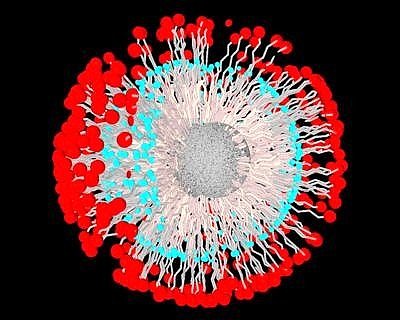Nanoparticles with innovative electronic properties
Researchers at FAU have developed a concept for controlling nanoparticles
Researchers at the Chair of Organic Chemistry II at FAU have discovered that it is possible to control the optical and electronic properties of aluminium oxide nanoparticles, despite the fact that they are typically electronically inert and optically inactive. They have now designed a concept for managing these doubly functionalised nanoparticles. They have published their findings in the journal ‘Chemistry – A European Journal’ (DOI: 10.1002/chem.201901052).
The researchers succeeded in grafting a phosphonic acid derivative onto the oxide surface of the nanoparticles. This led the usually virtually transparent and colourless particles to emit an intense turquoise fluorescence. At the next stage an amphiphile, a substance which is soluble in both fat and water, was formed at the surface, fundamentally changing the optical and electronic behaviour of the originally mono-functionalised nanoparticles. If nanoparticles functionalised in this way are excited in the wavelength spectrum, electrons are transferred to the components which have fewer electrons. The turquoise-coloured fluorescence of the electron-rich nanoparticles is reduced and, depending on the concentration of the electron-poor amphiphile, an orange-coloured fluorescence is reached step by step. Finally, the particles emit a pale pink colour in daylight.
Prof. Dr. Andreas Hirsch, Chair of Organic Chemistry II , has developed this concept as part of his fundamental research conducted with research associate Lisa Stiegler.
Further information:
Prof. Dr. Andreas Hirsch
Phone: +49 9131 85 65581
andreas.hirsch@fau.de
Lisa Stiegler
Phone: +49 9131 85 67513
lisa.stiegler@fau.de

